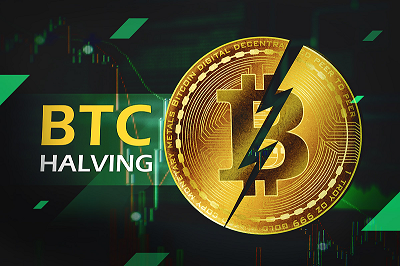The Bitcoin network has reached a pivotal juncture as it ushers in its fourth halving event, a programmed occurrence that takes place roughly every four years. This latest halving, which transpired at block height 840,000, has reduced the block subsidy reward for miners from 6.25 BTC to 3.125 BTC, effectively cutting the rate of new bitcoin issuance in half.
Bitcoin halvings are a fundamental feature of the cryptocurrency’s design, aimed at gradually decreasing the supply of new coins entering circulation. These events are pre-programmed to occur automatically every 210,000 blocks, approximately once every four years. During a halving, the block subsidy reward received by miners for validating transactions and adding new blocks to the blockchain is slashed by 50%.
While miners continue to earn transaction fees as an additional incentive, the reduction in the block subsidy reward has significant implications for the network’s dynamics and the economics of mining operations.
This halving marks a significant milestone for Bitcoin, as nearly 95% of all bitcoins that will ever exist have now been mined. Furthermore, the annualized growth rate of Bitcoin’s supply will soon fall below 1% for the first time in its history, further solidifying its status as a deflationary asset. As the halving event unfolded, industry experts and stakeholders weighed in on its potential impact and the evolving dynamics within the Bitcoin ecosystem.
Thomas Perfumo, Head of Strategy at Kraken, emphasized the significance of this particular halving, stating, “After April 2024, nearly 95% of all bitcoins that will ever exist will have been mined. Furthermore, the annualized growth of bitcoin’s supply each year will soon fall to less than 1% for the first time.”
While miner revenues have risen in tandem with Bitcoin’s price appreciation this year, the extent of the impact the halving will have on less efficient mining operations and the overall network metrics remains to be seen.
Binance CEO Richard Teng acknowledged that the reduction in subsidy rewards could prompt some miners to exit the market, temporarily impacting the network’s processing abilities before the next difficulty adjustment. However, he expressed confidence in the network’s resilience, citing advancements in mining technology, strategic shifts, and potential adjustments in mining difficulty as mitigating factors.
“The Bitcoin network has shown resilience in the face of such challenges in the past. Advancements in mining technology and strategies, as well as potential adjustments in mining difficulty, could mitigate the impact of reduced miner participation,” Teng said.
Bitfinex Head of Derivatives Jag Kooner echoed similar sentiments, suggesting that while some miners may face increased pressure due to reduced block rewards, leading to potential consolidation among larger, more financially robust entities, this shift also presents an opportunity for innovation and efficiency improvements within the mining sector.
“Some miners are anticipated to face increased pressure due to the reduced block rewards, which could force less efficient companies out of the market.
“Some miners are anticipated to face increased pressure due to the reduced block rewards, which could force less efficient companies out of the market. This could lead to greater centralization of mining power among larger, more financially robust entities,” Kooner said. “However, this shift also presents an opportunity for innovation and efficiency improvements within the sector. Miners might explore new regions with cheaper energy sources or invest in more efficient mining technology to maintain profitability.” This halving cycle is particularly unique, as it coincides with the launch of the first U.S. spot bitcoin exchange-traded funds (ETFs) in January of this year. These ETFs have already generated over $12 billion in net inflows, potentially shaping market dynamics in unprecedented ways.
“During this halving cycle, miners have been selling less bitcoin on exchanges, indicating a more bullish stance amid price surges and increased accessibility driven by ETF inflows,” Adrian Fritz, Head of Research at 21Shares, which offers one of the ETFs alongside Ark Invest, observed.
Additionally, the emergence of the Ordinals protocol, which enables the inscribing of non-fungible tokens (NFTs), fungible tokens (BRC-20s), and other digital assets directly onto the Bitcoin blockchain, has injected a new wave of activity and potential revenue streams for miners.
“This halving is also unique because of ordinals and ETFs. ETFs lead to more inflows. Ordinals give more revenue to miners from fees,” Bob Bodily, CEO and co-founder of Ordinals marketplace and launchpad Bioniq, said. “Because of the inflow and more consistent fee market, this time we won’t see as big of a hash rate drop as typically seen during halvings.”
Charles Guillemet, CTO of Ledger, expressed optimism about the cycle ahead, stating, “This 2024 halving cycle strongly differs from the previous ones given the SEC’s spot bitcoin ETF approvals added substantial demand for bitcoin, driving the price to an all-time high in March 2024. Thanks to this unprecedented demand, and if the bitcoin price remains relatively consistent where it is now, miners won’t have to unplug their machines and sell their bitcoin savings to survive post-halving. In other words, miners are about to win their bet!”
As the block subsidy reward diminishes, transaction fees will become an increasingly critical revenue stream for Bitcoin miners. With renewed activity on the Bitcoin blockchain, particularly from Ordinals-related activity, transaction fees are poised to play a more prominent role in the overall Bitcoin economy.
“The upcoming halving will have a multifaceted impact on the Bitcoin miners by reducing block rewards and shifting profitability and operational costs,” Fritz added. “Miners may seek refinancing options to navigate this shift and maintain operations, and as block rewards diminish, transaction fees will become the primary revenue stream for miners — indicating a shift in the overall Bitcoin economy.”
This halving also coincides with the launch of the Runes Protocol, a new fungible token standard for Bitcoin designed to address the UTXO bloat caused by the existing BRC-20 minting process. According to Leonidas, co-founder of Bitcoin Ordinals explorer Ord.io, “The timing is no coincidence. The Runes Protocol will stir up a significant amount of on-chain activity that will increase Bitcoin’s network fees which will help offset the decrease of the miner reward from the halving.”
Industry experts anticipate growing collaboration between miners and Bitcoin Layer 2 projects, as miners seek additional revenue streams, and Layer 2 solutions seek to harness Bitcoin’s robust security model. “Miners will continue to look for more revenue and will be incentivized to bootstrap new Layer 2 Bitcoin projects, because the more successful use cases built on Bitcoin, the more miners are able to make as each halving dwindles their rewards,” said Alexei Zamyatin, co-founder of BOB, a hybrid Bitcoin Layer 2 solution.
Jesse Shrader, co-founder and CEO of Lightning Network data provider Amboss, predicted that more mining pools would integrate the Lightning Network after the halving to lower their payout thresholds and waiting times. “Excitement is growing on alternative uses for the Bitcoin blockchain, including BRC-20 2.0, Ordinal Inscriptions, Runes and Taproot Assets. These uses create upward fee pressure, but only one is close to being ready to be Lightning compatible to avoid high fees: Taproot Assets,” Shrader added.
Michael Anderson, co-founder of VC firm Framework Ventures, highlighted the growing appetite for Bitcoin-adjacent technologies, stating, “The Bitcoin community has become much more open-minded to new ideas during this cycle, and we’re seeing a bigger appetite for Bitcoin-adjacent tech in the VC space as more and more qualified teams start to build Layer 2 infrastructure.”
As the Bitcoin network embarks on this new epoch, the implications of the halving event and the evolving dynamics within the ecosystem will undoubtedly shape the future trajectory of the world’s largest cryptocurrency. With the block subsidy reward diminished, transaction fees and Layer 2 collaborations are poised to play an increasingly pivotal role, while the influx of institutional capital through spot ETFs and the emergence of innovative protocols like Ordinals inject new catalysts into the market.
The Bitcoin community remains resilient and adaptive, with industry stakeholders expressing cautious optimism about the prospects of this unique halving cycle. As the network navigates this transitional period, the industry’s ability to innovate, optimize, and embrace emerging technologies will be put to the test, setting the stage for the next chapter in Bitcoin’s ever-evolving narrative.



